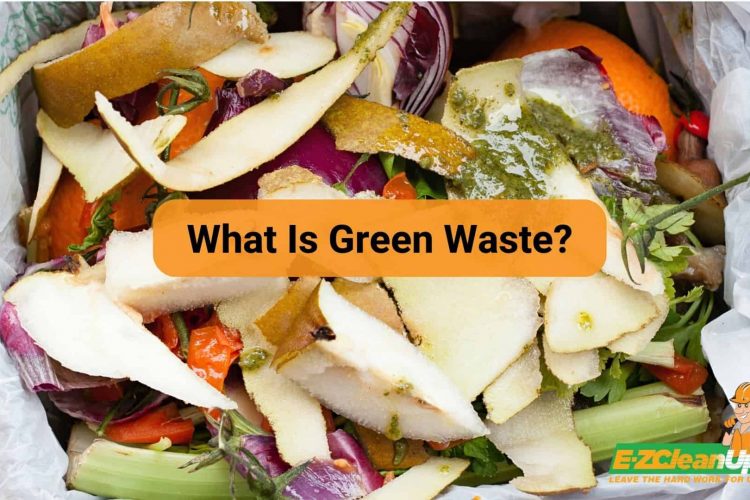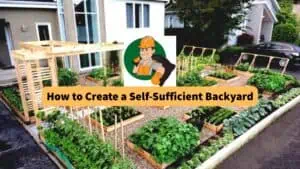Green waste refers to organic waste items, often produced from gardens and parks, such as grass clippings, leaves, branches, and other plant-based materials. It is biodegradable and can be recycled into compost or mulch.
Curious to find out more about what is green waste? Let’s explore the topic further.
What Is the Meaning of Green Waste?
Green waste is often used to describe waste items that originate from plants and gardens. Unlike everyday household waste – plastics, metals, or other inorganic materials, green waste is wholly organic. Given the right conditions, it will break down into simpler organic substances over time. This is unlike synthetic waste, which can take centuries to degrade, if at all.
While general waste, especially when not managed properly, can have long-term detrimental effects on the environment, green waste, when processed correctly, can be turned into compost. This compost enriches the soil and supports new plant growth.
Differentiating Green Waste from Other Types of Waste
What is green waste? Green waste stands out from other types of waste due to its organic nature and biodegradability. However, to get a clearer picture, let’s compare it with other common categories of waste.
Green Waste vs. Solid Waste
Unlike organic green waste, solid waste includes a wider range of items. It is generally defined as any garbage or other discarded materials, regardless of whether they are biodegradable or non-biodegradable, solid, liquid, semi-solid, or gaseous material.
There are solid waste items that can take anywhere from days (for organic materials) to centuries (like certain plastics) to decompose. The accumulation of solid waste in landfills can release methane, a potent greenhouse gas, and cause other environmental problems if not managed correctly.
Green Waste vs. Hazardous Waste
Green waste poses little to no risk to human health and the environment when handled correctly. On the other hand, hazardous waste includes materials that are dangerous or can be harmful to our health or the environment. They can be flammable, toxic, corrosive, or reactive. Examples include certain industrial byproducts, batteries, pesticides, and some household cleaners.
When it comes to disposal, green waste can be composted, mulched, or processed for bio-energy, while hazardous waste requires special disposal methods to prevent harm. This could include containment in special landfills, incineration in dedicated facilities, or neutralization.
Typically, regulations around green waste focus on ensuring it’s separated from general waste for appropriate processing. Meanwhile, given its potential risks, hazardous waste is usually subject to stringent regulations to ensure its safe handling, transportation, and disposal.
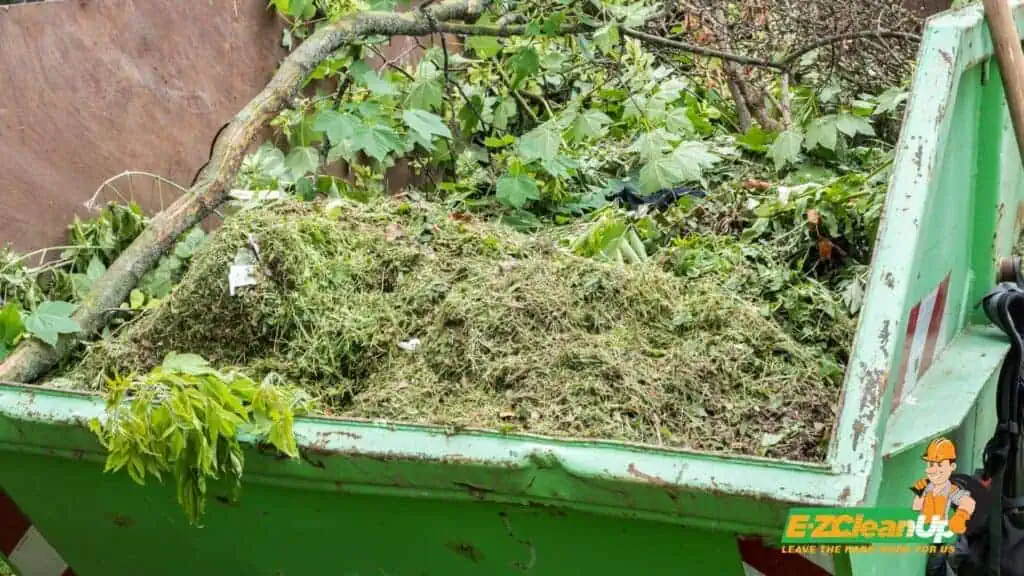
The Biodegradability and Compostability of Green Waste
Both these features make green waste a resource rather than a problem.
Biodegradability
Biodegradability refers to the capability of a substance to be decomposed by natural agents, particularly bacteria, fungi, and other microorganisms, which transform it into simpler substances over time. The organic materials in green waste, such as plant residues and garden trimmings, have cellular structures made of materials like cellulose, lignin, and proteins. These are readily broken down by microorganisms in the environment.
Biodegradable waste, when decomposed under controlled conditions, doesn’t accumulate in the environment. Instead, it returns to the ecosystem as a part of the natural cycle. This contrasts sharply with non-biodegradable waste, which remains in the environment for much longer and causes pollution and other ecological challenges.
Composting
Composting is the controlled decomposition of organic materials, including green waste, by microorganisms. The process results in the production of compost, a nutrient-rich, soil-like material. Green waste is collected and piled together. The pile is maintained at a certain moisture and temperature level to encourage microbial activity.
As microorganisms break down the organic material, they generate heat, which in turn speeds up the decomposition process. The pile is periodically turned to allow for aeration. After weeks to months, depending on the process, the green waste transforms into compost. This material is rich in nutrients and acts as a soil conditioner that enhances soil fertility and structure.
Types of Green Waste
While the term “green waste” might bring up images of garden waste, it is more than just that. By categorizing green waste, we can better understand its sources and manage it efficiently.
Yard Waste
One of the most common types of green waste, yard waste, comes from regular maintenance and care of gardens, yards, and public parks.
- 🌾 Grass Clippings: They are rich in nitrogen and can decompose quickly, which makes them great for composting.
- 🌿 Leaves: Falling leaves, especially during autumn, contribute significantly to yard waste. These can be mulched or composted to enrich the soil.
- 🌴 Branches: Often pruned from trees and shrubs to maintain their shape or health, branches decompose slower than grass or leaves but can still be chipped and turned into mulch.
Food Waste
Another significant contributor to green waste, food waste primarily originates from kitchens, whether in homes, restaurants, or commercial settings.
- 🥑 Kitchen Scraps. These include vegetable peels, fruit skins, coffee grounds, eggshells, and other organic residues from meal preparation. They are packed with nutrients and are excellent for composting.
- 🥔 Organic Matter. This refers to uneaten or spoiled food, like stale bread, expired dairy products, or leftover meals. While these waste items might not always be suitable for direct composting due to potential pests, they can still be processed in specialized facilities, like biodigesters, to harness their energy.
Garden Waste
The care and attention we give to our gardens to keep them lush leads to the generation of garden waste. As nature renews itself, plants grow, flowers fade, and gardens undergo seasonal changes.
- 🍀 Plant Trimmings. As plants grow, they may occasionally require trimming to encourage further growth. This results in trimmings, which consist of leaves, stems, and sometimes even flowers.
- 🌱Pruning. This is a more deliberate form of cutting to ensure the health of the plant, improve fruit or flower yield, or achieve a specific shape. The waste generated from pruning can be substantial, especially when dealing with larger plants and trees.
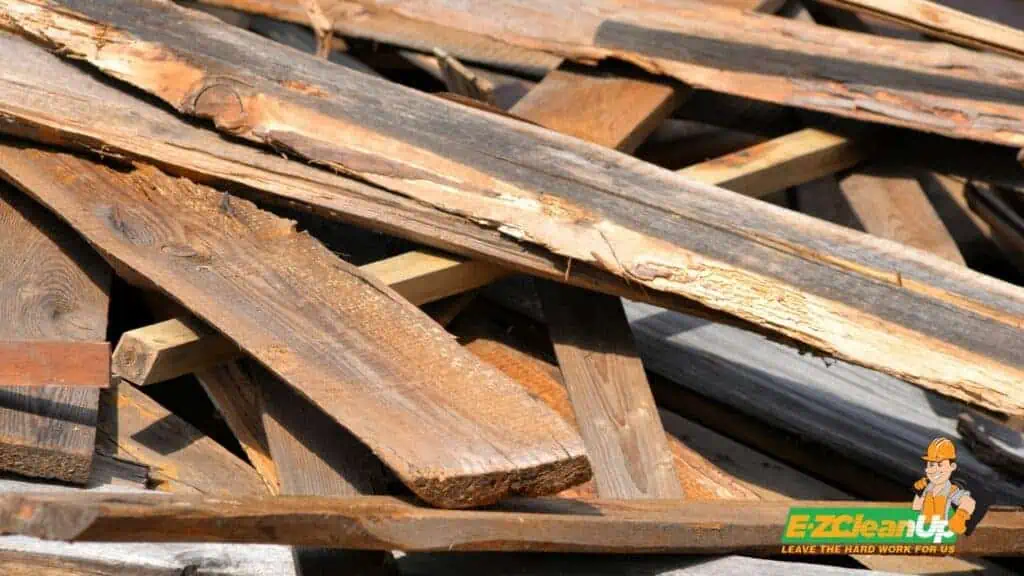
Wood Waste
Wood waste might seem distinct from the green waste generated by gardens and kitchens, but it also holds organic origins from the trees from which it’s derived. Given its nature, wood waste has unique management needs and potential uses.
- 🧱 Lumber. Off-cuts, shavings, and residues from woodworking and construction activities fall into this category. Whether it’s from building a new deck, renovating a home, or crafting furniture, lumber residues are a frequent byproduct.
- 🤜🏾 Wood Chips. Often produced from chipping branches, shrubs, and sometimes even larger logs, wood chips can be used as mulch to suppress weeds, retain moisture, and regulate soil temperature. Additionally, wood chips are increasingly being utilized in bioenergy production.
In many scenarios, rather than being discarded, wood waste is repurposed – serving as raw materials for other projects or as a source of green energy. Both garden and wood waste, like other types of green waste, remind us that with proper management, what appears to be “waste” can often be transformed into useful resources.
Environmental Benefits of Green Waste Management
When we speak of green waste management, we’re discussing an approach that turns organic residues into environmental assets. Let’s now focus on the positive impacts of green waste recycling and composting.
🌱 Soil Enrichment
One of the direct benefits of composting green waste is the production of compost, which improves soil quality by enhancing its nutrient content, making it more fertile. As a result, crops and plants grow better.
🌿 Reduced Need for Chemical Fertilizers
With the soil fortified by compost, there’s a decreased reliance on chemical fertilizers. These fertilizers can contaminate groundwater, harm beneficial soil microbes, and negatively impact aquatic life when they run off into waterways. By substituting or reducing them with natural compost, we protect ecosystems and improve soil health.
♻️ Waste Reduction and Landfill Diversion
By recycling green waste, we significantly reduce the volume of waste sent to landfills. This not only conserves space but also minimizes the methane emissions produced when organic waste decomposes anaerobically in landfills.
🌍 Carbon Sequestration
Healthy soils, enriched by compost, have a greater capacity to store carbon, effectively acting as carbon sinks. This process, known as carbon sequestration, plays an important role in offsetting emissions.
💧 Water Conservation
Compost-enhanced soils also exhibit better water retention capabilities. This means gardens and crops require less frequent watering, which leads to water conservation—a crucial factor, especially in regions prone to drought.
How Proper Green Waste Management Reduces Greenhouse Gas Emissions
The challenge of climate change has prompted global communities to seek effective strategies for reducing greenhouse gas (GHG) emissions. One significant yet often overlooked solution lies in the appropriate management of green waste.
When green waste is dumped in landfills, it undergoes anaerobic decomposition, a process that produces methane. In many countries, landfills serve as one of the top sources of methane emissions, which makes the seemingly innocent act of discarding yard clippings or food scraps a significant environmental concern.
Green Waste Management as a Solution
Instead of decomposing anaerobically in a landfill, green waste can be composted. Composting is an aerobic process, which means it requires oxygen. In the presence of oxygen, organic matter breaks down to produce carbon dioxide instead of methane. Although carbon dioxide is also a greenhouse gas, its impact is considerably less than methane in terms of global warming potential.
Properly managed green waste, particularly woody materials, can act as a carbon sink. When incorporated back into the soil, composted green waste helps to store carbon, thus reducing the amount freely circulating in the atmosphere. Some facilities collect green waste for bioenergy and convert it into biogas. This not only diverts organic matter from landfills but also provides a renewable energy source, which reduces the dependency on fossil fuels.
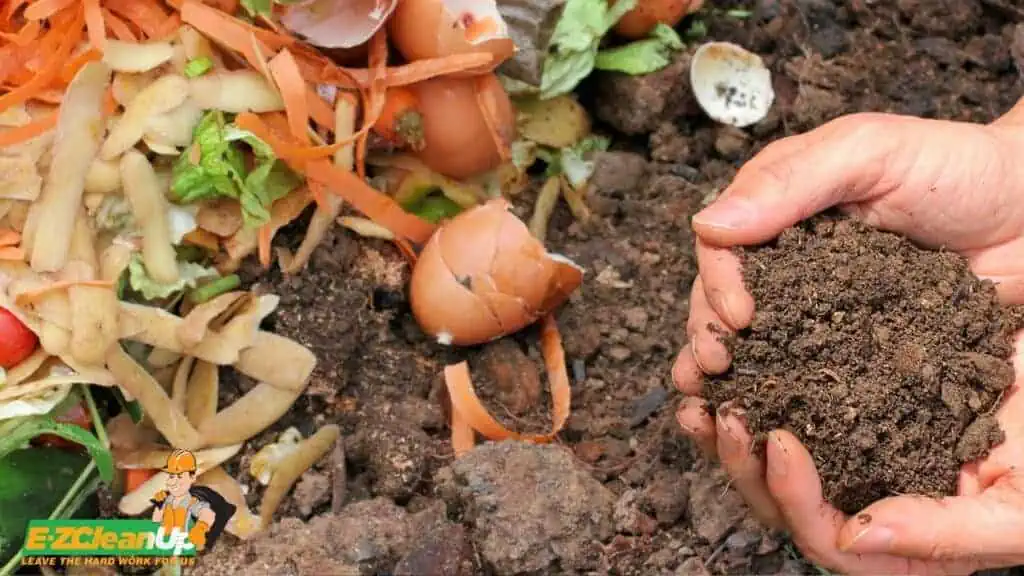
Turning Green Residues into Golden Opportunities
Green waste, a seemingly simple byproduct of our daily activities, holds big potential in shaping a sustainable future. From our gardens to our kitchens, the organic residues we generate can, with responsible management, nourish our soils, combat climate change, and drive eco-friendly practices. Yet, managing this waste efficiently often requires expertise, especially when dealing with large volumes or diverse types of waste.
For those residing in Philadelphia and the surrounding regions, turning to professional junk removal companies like EZ CleanUp can simplify this process. Whether you’re a homeowner wanting to declutter your yard, a business needing a thorough cleanup, or a general contractor seeking efficient construction site waste management, we make sure that all your green waste, along with your other junk, is managed responsibly and efficiently.
Contact EZ CleanUp for all your junk removal and green waste management needs. Take action today for a cleaner, greener future.

